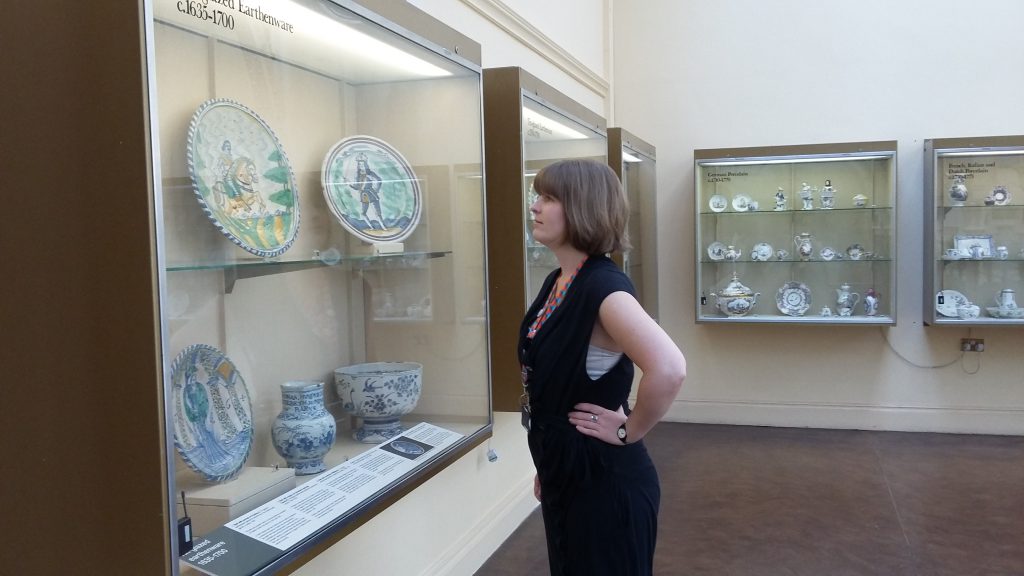“I am the sum total of everything that went before me, of all I have been seen done, of everything done-to-me. I am everyone everything whose being-in-the-world affected was affected by mine.” ― Salman Rushdie, Midnight’s Children
London-based, Iran born artist Samin Ahmadzadeh assimilates archival photographs into evocative, interwoven images. In her powerful new exhibition – ‘W: E’ at Argentea Gallery in Birmingham – she uses these private mementoes to generate public discourses around the interconnection of identity, experience and memory across time and cultures.
Samin began working with archival material whilst studying a Masters degree in Photography at Central Saint Martin’s School of Art and Design. She used her own family archive, which included images of her father, whilst he was educated at a British boarding school, distanced from his native Iran. Recognising reverentially that “family albums are our memories and a representation of our cultural identity”, she used her personal, photographed past to picture the intercultural crossover which occurs within the self, between people and amongst a collective consciousness.

In this exhibition, she has continued to work with personal archives, installing images of her family alongside those from photographer Tim Andrews. Tim Andrews is known for turning himself into an art project: after being diagnosed with Parkinson’s, he freed himself from his former career as a solicitor and allowed photographers – over 130 of them to date – to turn the camera on him. Aware of Samin’s photography practice, he invited her to see his collection of family photographs, asking if she wanted to work with them. She was instantly struck by similarities to her own visual history, and both archives significantly spanned the same time period, reaching from the 1930s to the 1980s.
Using both private collections, from Britain and Iran, Samin Ahmadzadeh created 50 works for this exhibition. Each of the objects was made through a unique process of cutting, shredding and intricately hand weaving photographs together. Each works has a distinct feel: ‘Nanny and Child’ shows two faces aligned across 6 large squares, whilst ‘Ahvaz Garden’ is defined by slanting, diagonal intersections of images, creating a pixilated, digitised feel, making the figures hard to read. Across the installation fragments are integrated into interlocking patterns; intimate, individual elements are sewn together to make a fabricated whole, creating a shifting, impressionist quality.
In many of the images viewers find portraits entwined with place, about which the artist explains: “I mostly make portraits mixed with landscapes because landscapes are part of our experience, and who we are”. At the same time, there are unifying echoes which occur across these embroidered archives, creating a cross-cultural dialogue, West meeting East. A picture of Tim’s mother facing the British coast is mirrored by Samin’s Iranian family beholding ships on the Persian Gulf. Often, the viewer is held by the subject’s pose or expression, caught amongst diagonal patterns of the combined archive photographs.
In a world where we increasingly use photography to construct simplified, idealised identities of ourselves, this exhibition intimates the idea of identity as complex and evolving. As Samin explains, “Society often identifies people by race, nationality, religion, gender, or even vocation. Yet identity is also intensely personal and reflects an individual human being’s lived experience”. This beautiful body of multi-faceted work re-enforces the notion that memory and identity are interlaced fragments, much as it is stored and recalled in our minds.

There is an intimate nature to the miniature photographic portraits, which demand a closeness, breaking down the barrier between object and observer. One wall displays fifty small circles, each just ten centimetres wide, asking the viewer to physically step towards individual art works. Samin speaks of specific details which are poignant and of personal significance to the viewer, drawing them in – termed ‘punctum’ by Roland Barthes. While some seem like icons, other look like film stills, allowing us to build our own stories and interpretations around the images, reconstructed from remembered experiences belonging to our own cultural past.
The richly woven photography of this exhibition offers viewers a threshold for encounters across cultures, identities and shared experiences, which we bring to our understanding of the images. Amidst a time in which we find social, political and physical barriers being built to corner off cultures and communities, this is an emotive body of work about our unifying interrelatedness. With ‘W: E’, Samin Ahmadzadeh asks us to consider the connecting commonality which weaves us together, beyond all borders.
‘W:E’ coincides with Samin Ahmadzadeh’s inclusion in ‘Reportrait’ which is on show at Nottingham Castle and Art Gallery from 27thMay – 10th September 2017, and for which she was commissioned to create 500 woven photographs.
You can follow Ruth on Twitter @ruth_millington for all the latest Birmingham art news


